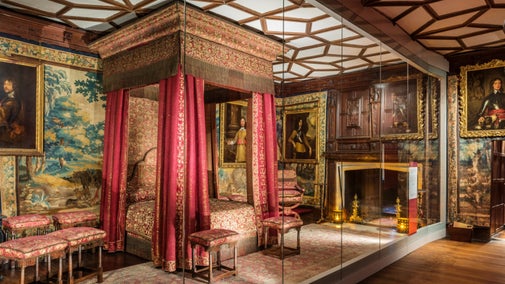Experts believe that craftsmen renovating Knole in anticipation of a visit from James I carved the witchmarks. In the wake of the failed Gunpowder Plot, the marks in the Upper King’s Room were intended to protect the king from evil spirits.
Fear and witchcraft in the 17th century
Mass hysteria swept the country following the assassination attempt on the Protestant King James I by Catholic plotters, including Guy Fawkes. Accusations of demonic forces and witches at work were rife at the time, following decades of religious upheaval.
The practice of carving intersecting lines and symbols was thought to form a ‘demon trap’, warding off evil spirits and preventing demonic possessions. The witchmarks illustrate how fear governed the everyday lives of people living through the early 17th century.
James I was noted for his personal interest in witchcraft and demons. He passed a witchcraft law in 1604 making it an offence punishable by death and even wrote a book, Daemonologie, in support of witch hunting.
Discovering the witchmarks
The witchmarks were uncovered by archaeologists from MOLA (Museum of London Archaeology). They were exploring Knole as part of the huge conservation project, Inspired by Knole, which was supported by the National Lottery Heritage Fund. The purpose of the project was to share more of Knole’s rich six-hundred-year heritage.
The marks, which include chequerboard and mesh designs, were found on beams and joists below the floorboards and on fireplace surrounds in the Upper King’s Room. The room is one of hundreds that make up the vast complex of Knole and the marks had lain hidden for centuries.





